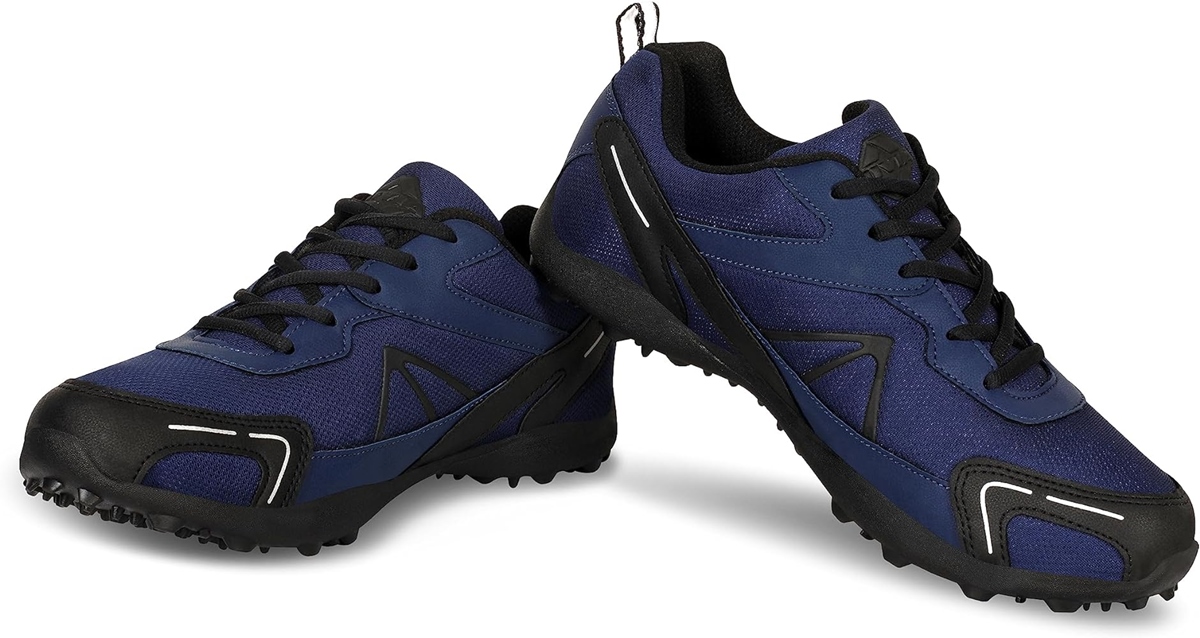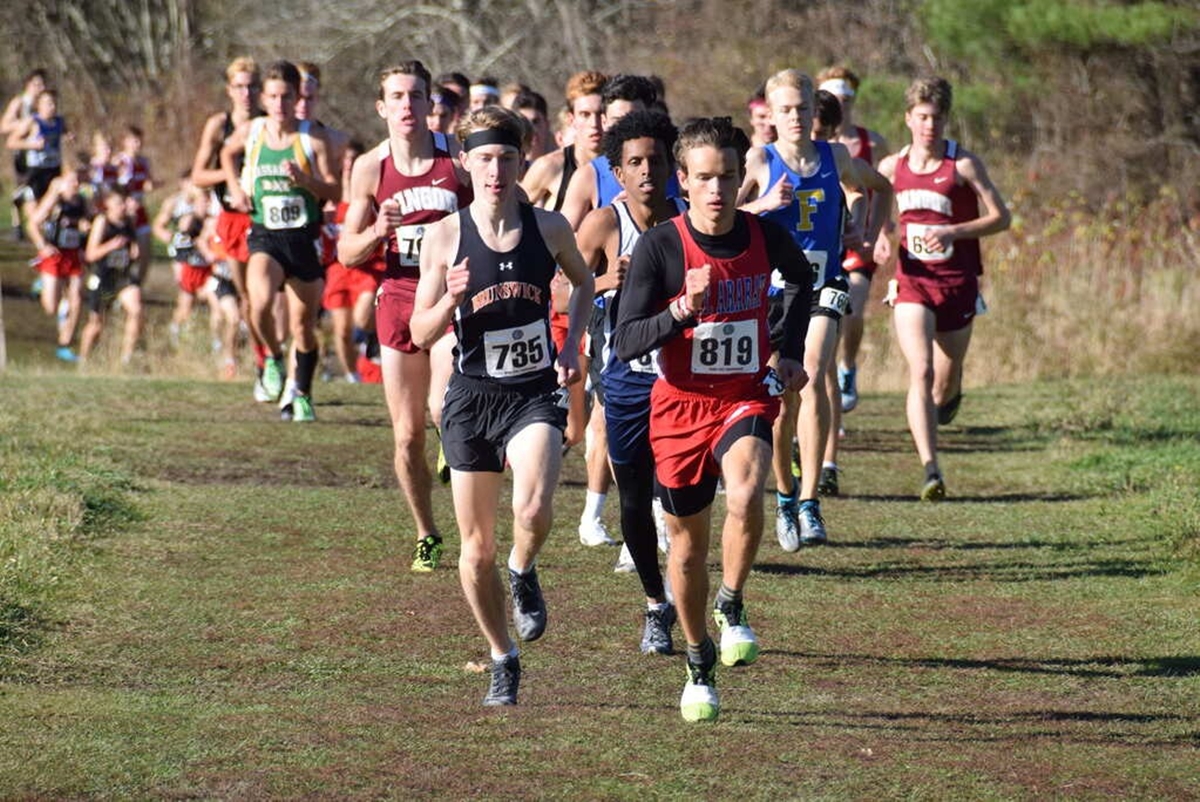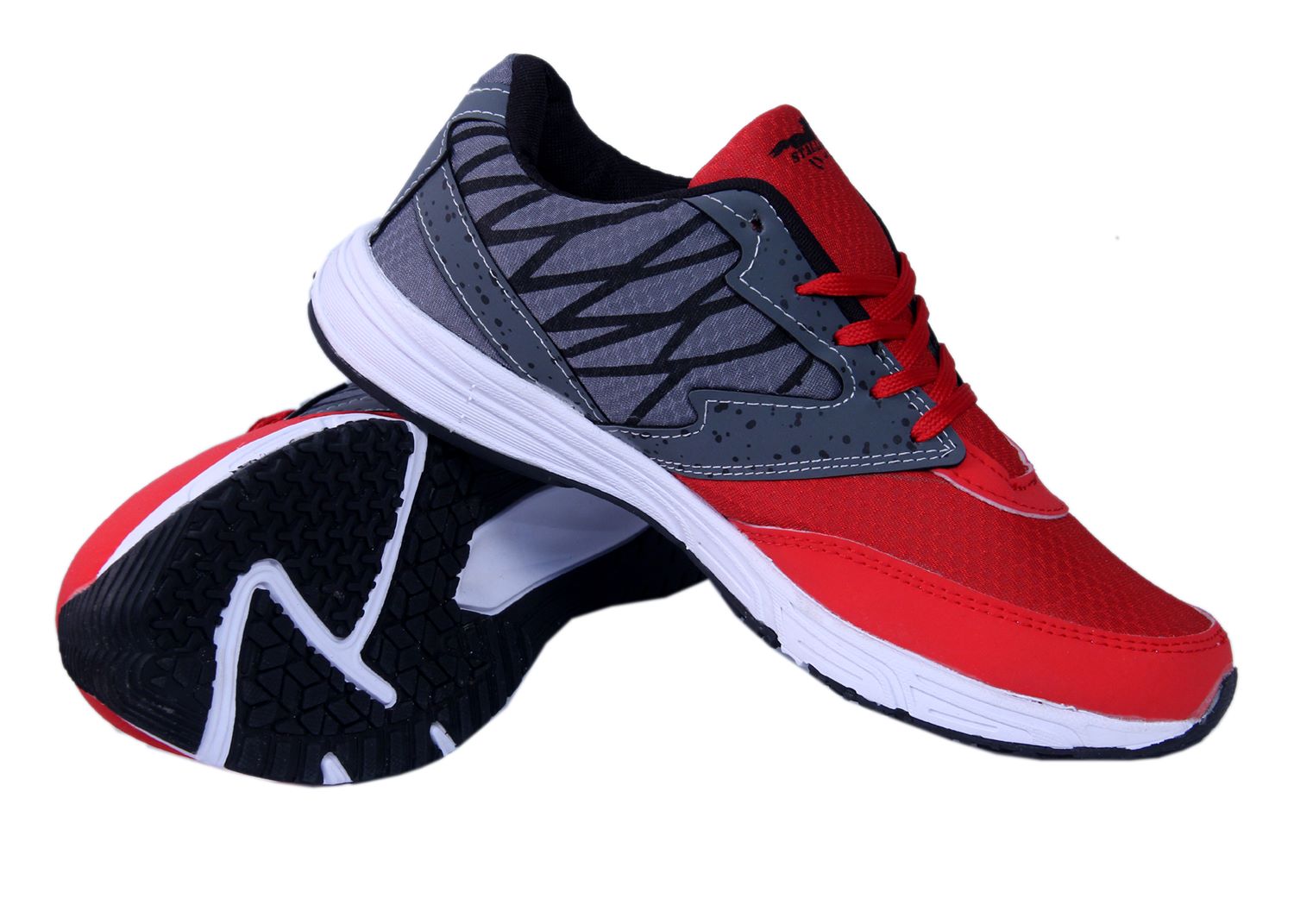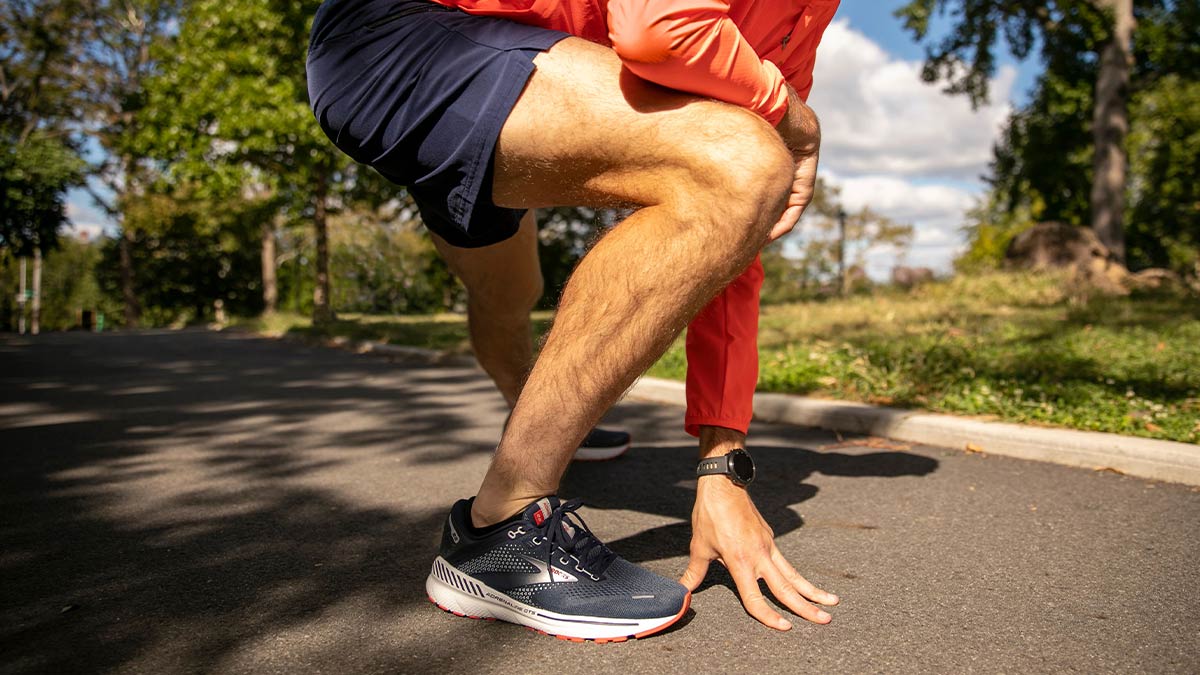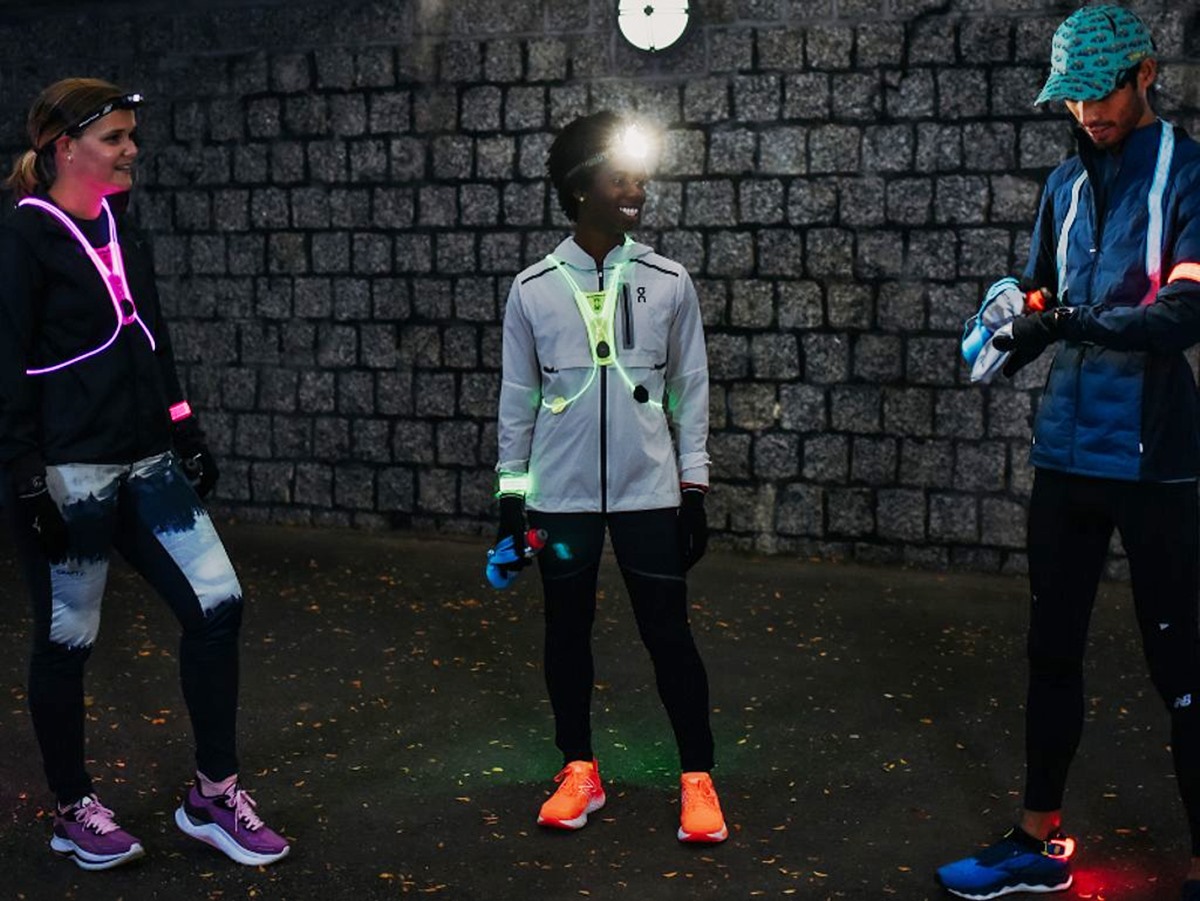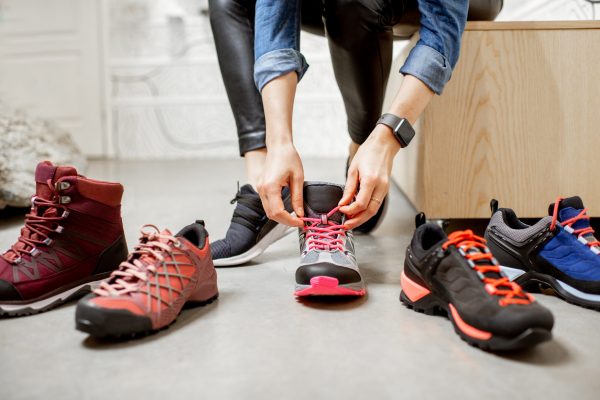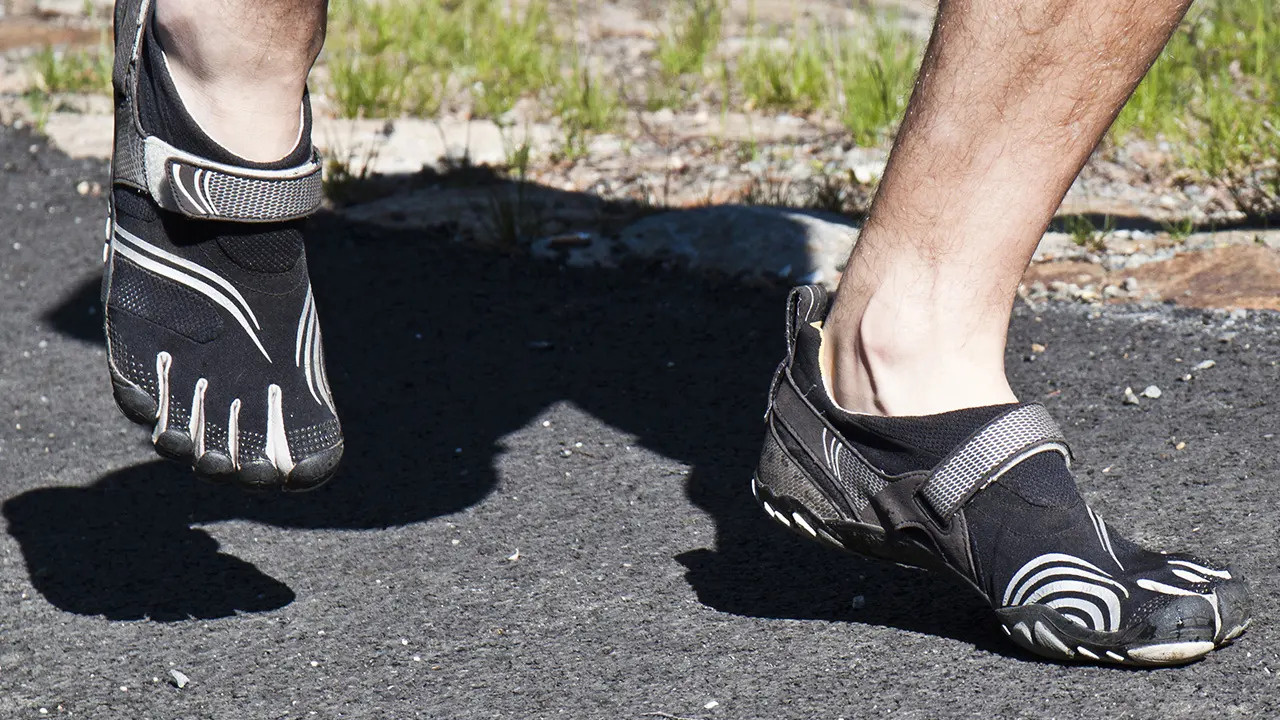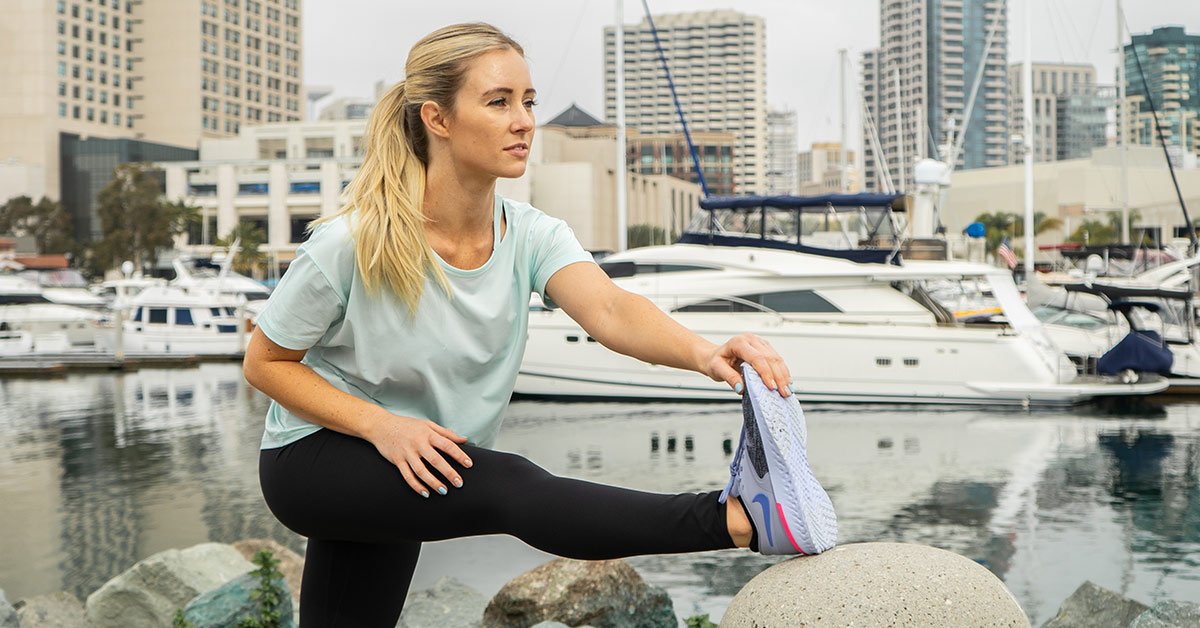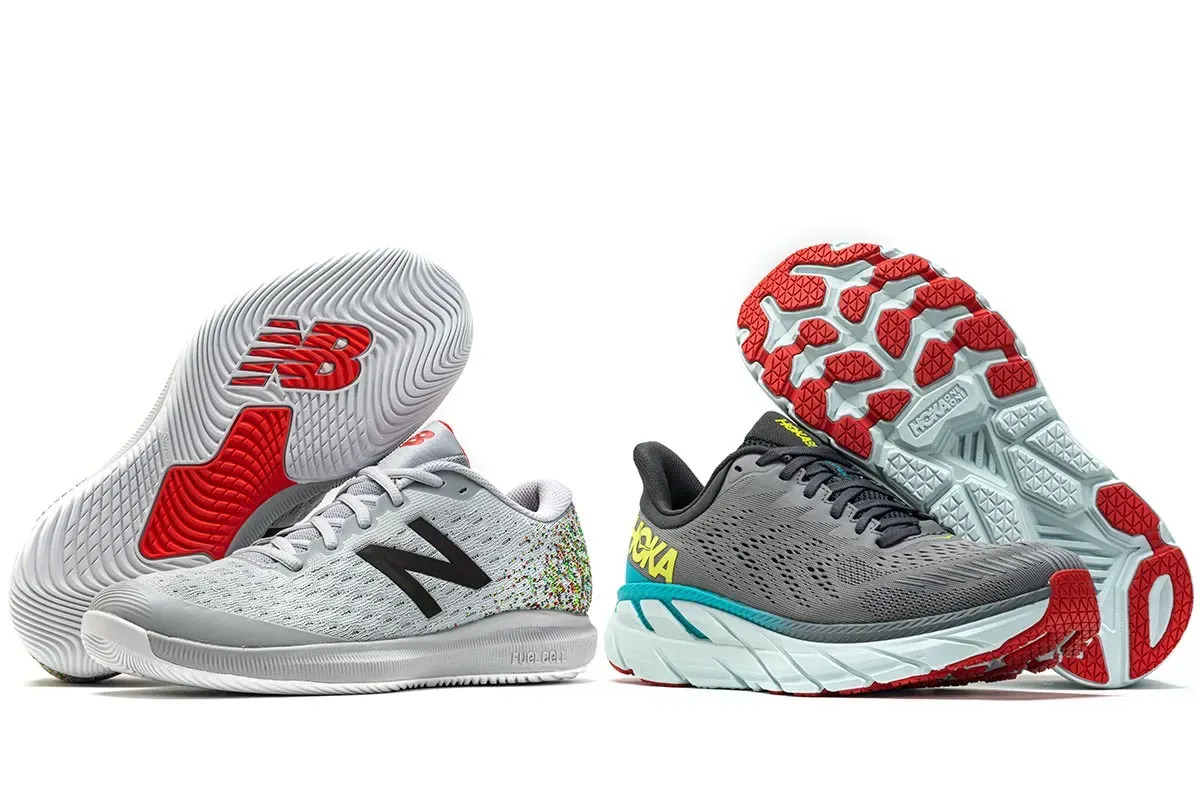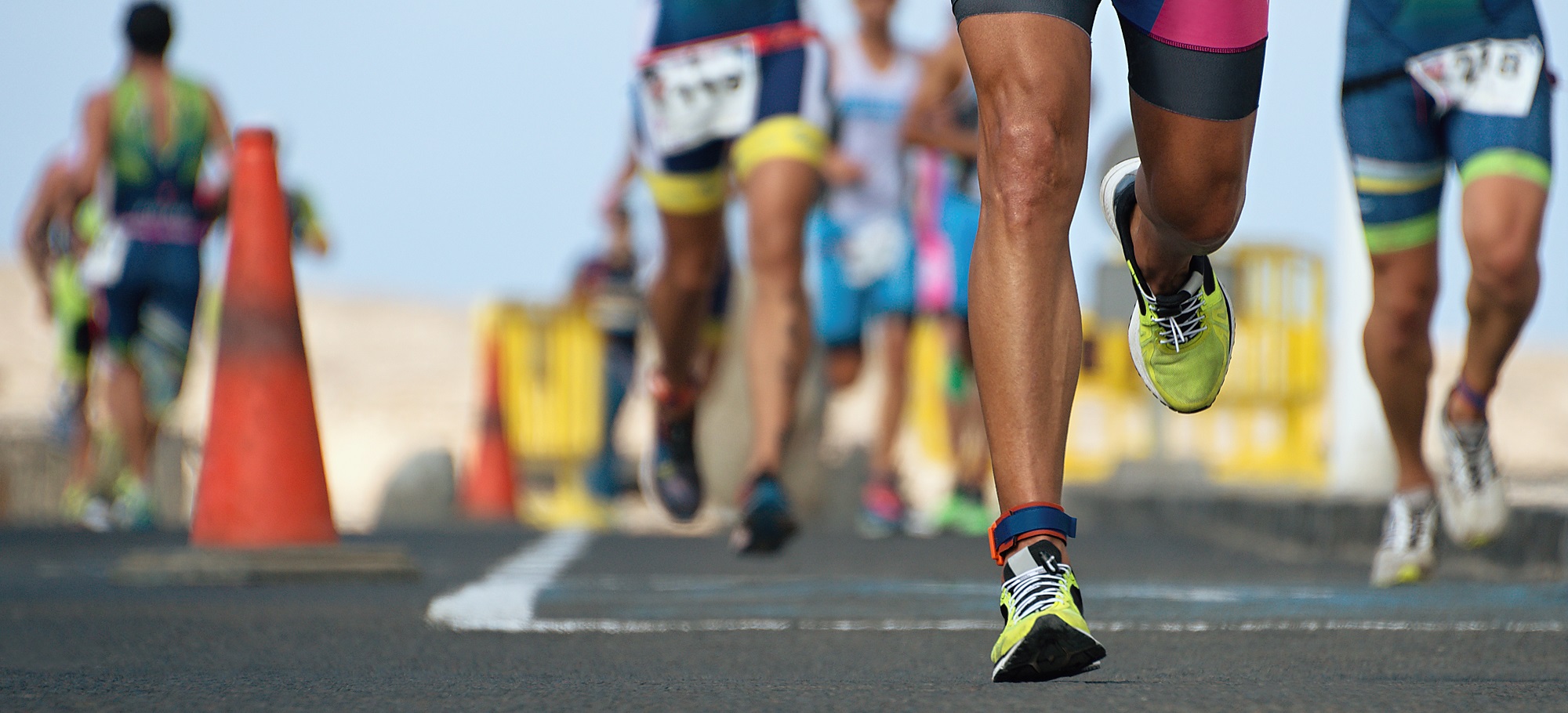

Featured
Running Shoes Squeak When I Walk
Modified: August 19, 2023
Discover the best-featured running shoes that eliminate squeaking noises when you walk. Enjoy comfortable and noise-free runs with our top-quality selection.
Introduction
Have you ever experienced the frustration of your running shoes squeaking when you walk? It can be quite irritating and embarrassing, especially when you’re trying to maintain a smooth and quiet stride. So, why do running shoes squeak? There are several possible reasons for this annoying noise, ranging from moisture on slippery surfaces to poor construction or loose parts.
In this article, we will explore the common causes of squeaky running shoes and provide some solutions to prevent or fix the issue. Whether you’re a seasoned runner or just starting your fitness journey, understanding why your shoes squeak and how to address the problem can improve your overall running experience.
If you’ve ever stepped out of the house after a rainy day and noticed that your running shoes are squeaking, moisture could be the culprit. When water gets trapped between the outsole and the ground, it can create a suction effect that causes the shoe to squeak with each step. Additionally, walking on slippery surfaces, such as wet tiles or smooth pavements, can also lead to squeaky shoes.
Another possible reason for squeaking shoes is poor construction or loose parts. Over time and with regular use, the adhesives and materials used in the shoe’s construction may deteriorate, resulting in squeaky sounds. Loose parts, such as inserts or insoles, can move around inside the shoe and produce unwanted noise.
Furthermore, inadequate cushioning or support can contribute to the squeaking problem. When the midsole or padding in the shoe wears down or loses its effectiveness, the remaining materials may rub against each other, causing a squeaky sound. This is more common in older or worn-out shoes that have been subjected to numerous workouts or extended periods of use.
Possible Reasons for Squeaking
There are several possible reasons why your running shoes may squeak. Understanding these reasons can help you identify the root cause of the issue and find the appropriate solution. Here are some common causes of squeaky shoes:
- Moisture and Slippery Surfaces: One of the primary causes of squeaking shoes is moisture. When water or other liquids get trapped between the outsole and the ground, it can create a suction effect that results in a squeaking sound with each step. Additionally, walking on slippery surfaces, such as wet tiles or smooth pavements, can also contribute to the squeakiness.
- Poor Construction or Loose Parts: If your shoes were poorly constructed or have loose parts, they are more likely to squeak. Over time, adhesives and materials used in the shoe’s construction can deteriorate, leading to squeaky sounds. Loose parts, such as inserts or insoles, can also move around inside the shoe and create unwanted noise.
- Inadequate Cushioning or Support: When the cushioning or support in your shoes becomes worn out or loses its effectiveness, the remaining materials may rub against each other, producing a squeaky sound. This is commonly seen in older or highly-worn shoes that have been subjected to numerous workouts or extended periods of use.
- Faulty Shoe Design: In some cases, the design of the shoe itself may contribute to squeaking. Certain shoe models or brands may have inherent design flaws that result in squeaky sounds. This is less common, but it’s worth considering if you’ve ruled out other potential causes.
Identifying the specific reason for your squeaky shoes can help you take the necessary steps to prevent or fix the issue. Now that we’ve explored the possible causes, let’s move on to the next section, where we’ll discuss some solutions to address squeaking shoes.
Moisture and Slippery Surfaces
Moisture and slippery surfaces are common culprits when it comes to squeaky running shoes. If you’ve ever stepped out of the house after a rainy day and noticed that your shoes are squeaking with each step, moisture could be the main cause. When water or other liquids get trapped between the outsole of your shoes and the ground, it creates a suction effect that leads to that annoying squeaking sound.
Moreover, walking on slippery surfaces such as wet tiles, smooth pavements, or polished floors can also contribute to the squeakiness. The lack of traction causes your shoes to slide slightly, which can generate friction and result in that irritating noise.
To prevent or reduce squeaking caused by moisture and slippery surfaces, there are a few steps you can take. First, make sure to thoroughly dry your shoes after they’ve been exposed to water. Remove any excess moisture by wiping them with a towel or using a dryer on a low heat setting. It’s also a good idea to let your shoes air dry naturally in a well-ventilated area. Avoid placing them near direct heat sources, as this can damage the materials.
If you know you’ll be walking on wet surfaces, consider applying a waterproofing spray to your shoes. This can help create a barrier that repels water, reducing the chances of moisture getting trapped and causing squeaking. Just be sure to follow the instructions on the spray and apply it evenly to all parts of the shoe.
Another option is to choose running shoes with a high-traction outsole. Look for shoes with rubber or sticky rubber soles that provide excellent grip on wet or slippery surfaces. These types of outsoles are designed to enhance traction and minimize the chances of slipping, reducing the likelihood of squeaking.
Finally, if you encounter a slippery surface, try adjusting your stride and foot placement. Take shorter steps and try to land with a slightly flatter foot to improve stability. This can help reduce the sliding motion and mitigate the friction that leads to squeaking.
By taking these simple measures, you can minimize the effects of moisture and slippery surfaces on your running shoes, ensuring a quieter and more enjoyable running experience.
Poor Construction or Loose Parts
Another possible reason for squeaky running shoes is poor construction or loose parts. Over time and with regular use, the adhesives and materials used in the construction of your shoes can deteriorate, leading to squeaking sounds. Additionally, loose parts within the shoe, such as inserts or insoles, can move around and create unwanted noise as you walk or run.
To address squeaking caused by poor construction or loose parts, there are a few steps you can take. First, inspect your shoes for any visible signs of damage or wear. Check the seams, soles, and any other areas that may be prone to deterioration. If you notice any loose stitching or separation of materials, it may be an indication of poor construction.
If you suspect that loose parts are causing the squeaking, try removing and reinserting the insoles or inserts in your shoes. Sometimes, they can become slightly displaced or unaligned, resulting in noise when walking. By properly aligning and securing these components, you may be able to eliminate the squeaking.
In some cases, you may need to tighten or replace specific parts to address the issue. If you notice loose stitching or detached sole sections, consider taking your shoes to a professional cobbler or shoe repair shop. They can assess the problem and provide the necessary repairs to fix the squeaking. This could involve re-gluing loose parts, reinforcing stitching, or replacing damaged components.
It’s worth noting that proper maintenance and care of your running shoes can help prevent premature deterioration and minimize the chances of squeaking due to poor construction. Ensure that you’re storing your shoes in a cool, dry place to prevent excessive moisture exposure. Avoid extreme temperatures and direct sunlight, as these can cause the materials to degrade more quickly.
Furthermore, following the manufacturer’s instructions for cleaning your shoes will help preserve their overall quality. Improper cleaning methods can weaken adhesives or damage the materials, leading to squeaking or other issues. If your shoes do get dirty, gently brush off any debris and use a mild soap or dedicated shoe cleaner to remove stains. Avoid soaking or machine washing unless specifically recommended by the manufacturer.
By being proactive with shoe maintenance and taking prompt action when you notice signs of poor construction or loose parts, you can prolong the life of your running shoes and minimize the chances of squeaking.
Inadequate Cushioning or Support
Inadequate cushioning or support is another common cause of squeaky running shoes. Over time, the cushioning materials in the midsole can wear down or lose their effectiveness, resulting in friction and squeaking sounds. This is especially true for older or highly-worn shoes that have been subjected to numerous workouts or extended periods of use.
If you suspect that inadequate cushioning or support is the reason behind your squeaky shoes, there are a few steps you can take to address the issue. First, try replacing the insoles or inserts in your shoes. Many running shoes come with removable insoles that offer additional cushioning and support. By replacing worn-out or flattened insoles with new ones, you can restore the shoe’s original comfort and reduce squeaking.
If replacing the insoles doesn’t eliminate the squeaking, consider having the shoes professionally assessed. A knowledgeable salesperson or shoe specialist can examine the shoes and recommend alternative solutions. They may suggest replacing the shoes altogether if they determine that the cushioning has significantly deteriorated beyond repair.
In some cases, it may be possible to repair or enhance the cushioning of your shoes. There are shoe repair shops that offer services such as adding extra padding or inserts to the midsole. This can help restore the cushioning and minimize the chances of squeaking. However, it’s worth noting that the effectiveness of these repairs may vary, so it’s important to consult with a professional and discuss your specific needs.
Preventing squeaking due to inadequate cushioning or support starts with proper shoe maintenance. Rotate your running shoes regularly to allow them to decompress and regain their original shape. This can help prolong the lifespan of the cushioning materials and reduce the chances of squeaking.
Furthermore, it’s important to choose running shoes that match your specific needs and provide adequate cushioning and support from the outset. Consider factors such as your running style, foot type, and any specific conditions or issues you may have. Investing in a well-fitted pair of shoes that offer proper cushioning and support can go a long way in preventing squeaking and ensuring a comfortable running experience.
By addressing inadequate cushioning or support and taking the necessary steps to maintain your running shoes, you can minimize squeaking and enjoy a smoother and quieter stride.
Solutions to Prevent or Fix Squeaking
Dealing with squeaky running shoes can be frustrating, but there are several solutions available to prevent or fix the issue. Let’s explore some effective strategies that can help silence those squeaks and improve your running experience.
Drying and Cleaning the Shoes: If moisture is the cause of the squeaking, make sure to thoroughly dry your shoes after they have been exposed to water. Wipe them with a towel or use a dryer on a low heat setting to remove any excess moisture. Additionally, letting your shoes air dry naturally in a well-ventilated area can prevent the squeaking caused by moisture trapped between the outsole and the ground. Avoid placing them near direct heat sources, as this can damage the materials.
Tightening Loose Parts: In the case of loose parts, such as inserts or insoles, try removing and reinserting them properly. They may have become slightly displaced or unaligned, resulting in noise when walking or running. By ensuring that these components are securely placed, you may be able to eliminate the squeaking. If the issue persists, consider visiting a professional cobbler or shoe repair shop to have any loose parts tightened or re-glued.
Replacing or Repairing Inadequate Cushioning: If inadequate cushioning or support is the culprit, start by replacing the insoles or inserts with new ones. This can help restore the shoe’s original comfort and reduce squeaking. Alternatively, if the cushioning has significantly deteriorated, it may be necessary to replace your shoes altogether. Consult with a knowledgeable salesperson or shoe specialist who can assess your shoes and recommend suitable alternatives. If desired, you can also explore the option of having the shoes professionally repaired or enhanced with extra padding or inserts.
Regular Maintenance and Care: Proper maintenance and care of your running shoes can help prevent premature deterioration and minimize the chances of squeaking. Store your shoes in a cool, dry place to prevent excessive moisture exposure and avoid extreme temperatures and direct sunlight. It is essential to follow the manufacturer’s instructions for cleaning your shoes, using mild soap or a dedicated shoe cleaner. Improper cleaning methods can weaken adhesives or damage the materials, leading to squeaking or other issues.
Choosing Quality Shoes: Investing in running shoes that offer proper cushioning, support, and durability can significantly reduce the chances of squeaking. Consider factors such as your running style, foot type, and specific needs when selecting your shoes. Opt for models with high-quality construction and materials to minimize the risk of squeaking due to poor design or construction.
By implementing these solutions and taking proper care of your running shoes, you can prevent or fix squeaking, ensuring a quiet and comfortable running experience.
Drying and Cleaning the Shoes
When it comes to dealing with squeaky running shoes, moisture can often be the culprit. If you’ve noticed that your shoes are squeaking after being exposed to water or on wet surfaces, taking steps to dry and clean them properly can help eliminate the problem.
After your shoes have been exposed to water, the first step is to remove any excess moisture. Use a towel to wipe the shoes, focusing on the areas where water may have accumulated, such as the outsole and upper. Be gentle to avoid damaging the materials or displacing any loose parts inside the shoe.
Once you’ve removed most of the moisture, it’s essential to let your shoes air dry naturally. Find a well-ventilated area and place them in a position that allows air to circulate around the entire shoe. Avoid placing them near direct heat sources, as excessive heat can cause the materials to warp or shrink.
Depending on the severity of the moisture exposure, the drying process may take several hours or even a couple of days. Patience is key to ensuring that your shoes dry thoroughly and prevent any potential lingering moisture that could contribute to squeaking.
In addition to drying, proper cleaning is important to maintain the integrity of your running shoes. Regularly remove any dirt or debris by gently brushing the shoes with a soft brush or using a damp cloth to wipe away any surface grime. If your shoes require a deeper clean, opt for a mild soap or dedicated shoe cleaner. Follow the manufacturer’s instructions and use a soft brush or cloth to scrub away stains or marks. Avoid saturating the shoes with excess water, as this can lead to prolonged drying times.
It’s important to note that different shoe materials may require specific cleaning approaches. For example, mesh or knit uppers may benefit from gentle handwashing, while leather or synthetic materials may need specialized cleaning products. Always check the manufacturer’s recommendations for specific cleaning instructions and avoid harsh chemicals that may damage the shoe’s materials or adhesives.
By properly drying and cleaning your running shoes, you can prevent moisture buildup and reduce the chances of squeaking. Regular maintenance not only helps to eliminate squeaks but also extends the lifespan of your shoes, ensuring they remain comfortable and supportive throughout your runs.
Tightening Loose Parts
Loose parts inside your running shoes can often be the cause of annoying squeaks while walking or running. If you suspect that loose parts are contributing to the squeaking, there are steps you can take to tighten them and eliminate the noise.
Start by removing the insoles or inserts from your shoes and examining them for any signs of damage or displacement. Sometimes, these components can become slightly loose or unaligned, leading to squeaking as you move. Make sure they are fully inserted and properly aligned within the shoe.
If the issue persists, you may need to tighten or secure the loose parts more effectively. In some cases, tightening the laces can help hold the insoles or inserts in place, reducing movement and eliminating noise. Ensure that the laces are snug but not overly tight, as this could affect your comfort and foot stability.
Consider using additional techniques to secure loose parts within your shoes. Double-sided tape or adhesive strips can be applied to the underside of the insole or insert, helping to keep them in position and minimize movement. Make sure to use adhesive products that are specifically designed for use with footwear and won’t damage the materials or leave residue when removed.
If tightening and securing the loose parts of your shoes doesn’t resolve the squeaking issue, it may be time to seek professional assistance. Take your shoes to a shoe repair shop or cobbler who can assess the problem and provide appropriate solutions. They may need to re-glue loose parts or reinforce them with additional adhesives to eliminate the squeaking.
Personal safety is of utmost importance when attempting to fix loose parts in your shoes. Avoid using sharp or potentially harmful objects that could damage the shoe or result in injury. If you are unsure how to properly secure loose parts, it is always best to consult with a professional who has the necessary expertise.
Taking proactive steps to tighten loose parts in your running shoes can extend their lifespan and improve your overall comfort. By ensuring that all components are securely in place, you can enjoy a quiet and distraction-free workout or run.
Replacing or Repairing Inadequate Cushioning
Inadequate cushioning in your running shoes can lead to discomfort and, in some cases, squeaking. If you suspect that the cushioning in your shoes is worn out or no longer providing adequate support, there are options available to address the issue and restore your footwear to its optimal condition.
The first step is to assess the condition of the insoles or inserts in your shoes. These components are responsible for providing cushioning and support to your feet. If they appear flattened, compressed, or damaged, it may be time to replace them. Many running shoes come with removable insoles, making it easy to swap them out for new ones that offer improved cushioning. Look for insoles that are designed specifically for running or athletic activities, as they often provide additional padding and shock absorption.
If replacing the insoles does not resolve the inadequate cushioning issue, it may be necessary to consider replacing your running shoes altogether. The cushioning materials in the midsole can wear down over time, losing their ability to absorb impact and provide proper support. As a result, the shoes may no longer provide the level of comfort and protection needed, leading to squeaking or other discomfort.
Consult with a knowledgeable salesperson or shoe specialist to find a suitable replacement that meets your specific needs. They can help guide you toward shoes with adequate cushioning and support, taking into account factors such as your running style, foot type, and any specific conditions or issues you may have. Trying on several options and getting a professional fit assessment can ensure that you choose a pair of shoes that provide the comfort and support you require.
In some cases, depending on the severity of the cushioning problem and the condition of the rest of the shoe, it may be possible to repair or enhance the cushioning. Shoe repair shops or cobblers may offer services such as adding extra padding or inserts to the midsole, improving comfort and minimizing the chances of squeaking. However, it’s important to keep in mind that the effectiveness of these repairs may vary, so it’s essential to consult with a professional and discuss your specific needs before proceeding.
Regular maintenance and care of your running shoes can help prevent premature cushioning deterioration. It’s important to rotate your shoes regularly, allowing them time to decompress and regain their original shape. This helps to prolong the lifespan of the cushioning materials and reduce the chances of squeaking due to inadequate cushioning.
By addressing inadequate cushioning through proper replacement or repair measures, you can ensure that your running shoes provide the necessary comfort and support for a more enjoyable running experience.
Conclusion
Squeaky running shoes can be a frustrating issue, but by understanding the possible causes and implementing the appropriate solutions, you can eliminate those annoying noises and enjoy a quieter and more comfortable run. Moisture and slippery surfaces can contribute to squeaking, so be sure to dry your shoes thoroughly and consider using waterproofing sprays for added protection.
Poor construction or loose parts can also lead to squeaks, so inspect your shoes regularly and tighten any loose components. If necessary, seek professional help for repairs or part replacements. Additionally, inadequate cushioning or support can result in squeaking, and replacing worn-out insoles or considering new shoes may be necessary.
Maintaining your shoes through regular cleaning, proper storage, and careful handling can prevent premature deterioration and minimize the chances of squeaking. Investing in quality shoes that suit your running needs and foot type can also make a significant difference in preventing squeaks.
Remember, each pair of running shoes is unique, and the solutions may vary depending on the specific cause of the squeaking. It’s important to address the issue promptly to prevent further damage and discomfort. If you’re unsure or unable to resolve the squeaking problem on your own, it’s always wise to seek the advice of a knowledgeable professional.
By implementing these solutions and taking proper care of your running shoes, you can ensure a quieter and more enjoyable running experience. So lace up your shoes, hit the road, and leave the squeaking behind as you embrace the freedom and joy of running without any unnecessary noise.
